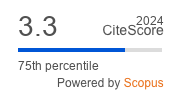Article | Open Access
Residential Segregation and Unequal Access to Schools
| Views: | 42103 | | | Downloads: | 10891 |
Abstract: Socio-spatial inequality and school inequality are strongly related. Where people live affects the opportunities individuals have in life, such as the opportunity to send your children to a good school. The level of urbanisation is related to the number of options people have to choose good schools, so more urbanised areas likely offer more options for good schools. However, the families that can choose good schools are likely families with high income or education levels. Data for this study come from two waves of the Taiwan Youth Project (N = 2,893), which consists of two cohorts of students from 162 classrooms in 40 junior high schools in northern Taiwan. When school quality is proxied by socioeconomic status (SES), the results show that, in general, students from the most urbanised areas, wealthier parents, and higher-educated parents, are more likely to go to higher SES schools. However, the strongest effects are for higher income and higher-educated parents in the most urbanised areas. This suggests that in the most urbanised areas, families have the most options regarding school choice, and richer and more educated families are better able to circumvent school catchment areas, either because they can afford an address in a better catchment area or because they understand the importance of school choice.
Keywords: catchment areas; parental socio-economic status; school quality; segregation; urbanisation
Supplementary Files:
Published:
© Jaap Nieuwenhuis, Jiayi Xu. This is an open access article distributed under the terms of the Creative Commons Attribution 4.0 license (http://creativecommons.org/licenses/by/4.0), which permits any use, distribution, and reproduction of the work without further permission provided the original author(s) and source are credited.


